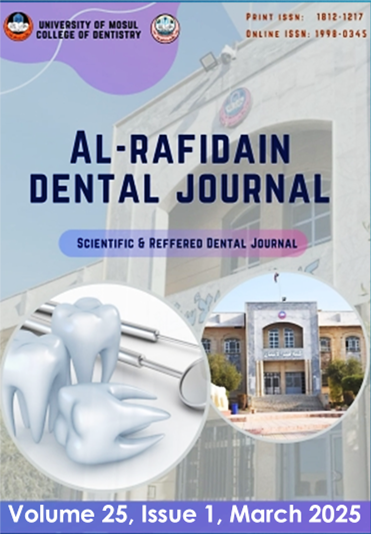The color stability of different composite shades using variable light-curing times
Abstract
Aims: The current study aimed to evaluate how the color stability of the composite resins was affected by the duration of light-curing time using light-emitting diode (LED) curing units and various composite shades. Materials and methods: The LED curing unit was used in different durations (10s), (20s), and (40s) for each shade (A1, A2) to prepare and polymerize samples in two shades of two different types of composite resin. The initial color parameters (L*, a*, b*, and E*) were determined using a spectrophotometer. After that, every sample was exposed to a thermocycling regimen that included 500 cycles in water at 55C and 5C. The final color readout was then obtained, and the Tukey-Kramer post-hoc test and ANOVA were used to ascertain the color changes. Results: Following the thermocycling regimen, the specimens' mean delta E* ranged from 0.055 to 4.151. The specimens' mean delta a*, delta L*, and delta b* were primarily negative. Most of the specimens showed noticeable color changes, shifting toward green discoloration (negative delta a*), blueish discoloration (negative delta b*), and a generally darker value (negative delta L*). Conclusion: Since the effect was more likely to depend on the composition of the constituent materials than on the actual shade categorization, the color change that the specimens experienced could not be predicted in connection to curing duration and types of composite shades. The degree of color change in composite resins was not significantly impacted by the time of the light cure or the variation in hues.












